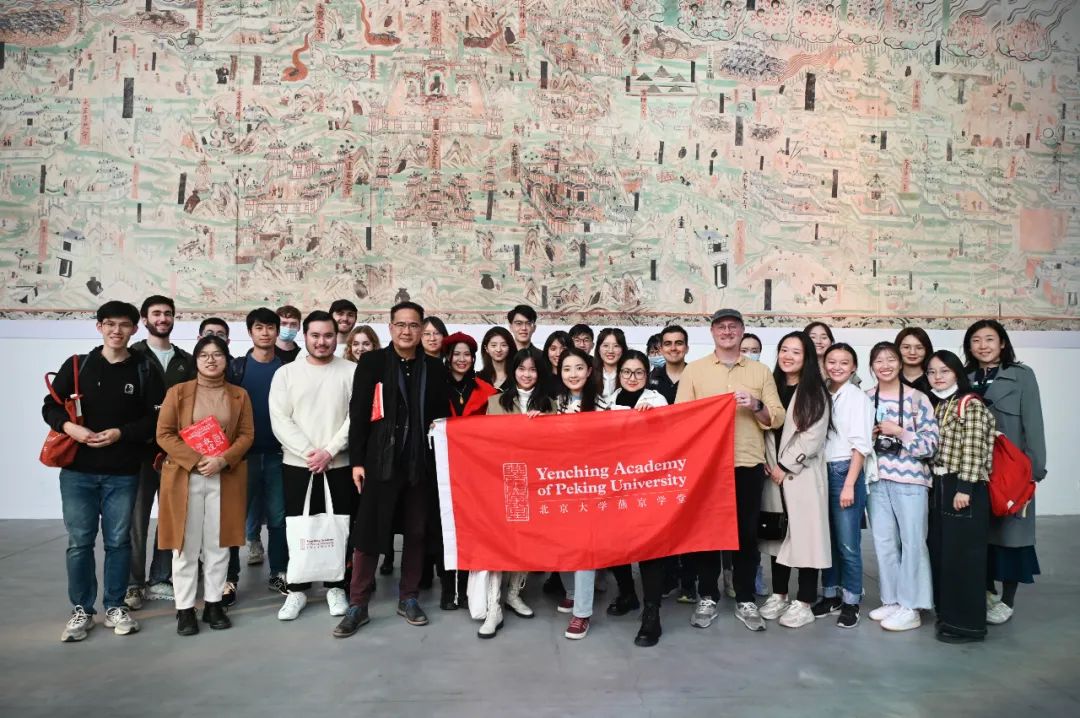On October 13, YCA Scholars and teachers immersed themselves in the glamor of Dunhuang art and Chinese civilization by attending “The Trace of Civilization: The Great Art of Dunhuang” exhibition in the Beijing Minsheng Art Museum.
The exhibition, jointly hosted by the Beijing Minsheng Art Museum and Dunhuang Academy, is the largest Dunhuang art-based show in China, featuring over 280 exhibits. The Dunhuang art was brought to life in the eight replica caves and other cultural relics displayed in the academic-based exhibition.
YCA Dean Dong Qiang and Associate Dean Brent Haas led the tour. On the way to the museum, Professor Dong Qiang talked about the exhibition’s opening ceremony, recounting his cherished memories of touring Dunhuang when he was a young man in his early 20s. Back then, he travelled along the routes that are today on the Belt and Road’s map, exploring, discovering, and experiencing the old-day prosperity on the Silk Routes. A new world was unveiled in front of his eyes during those excursions.
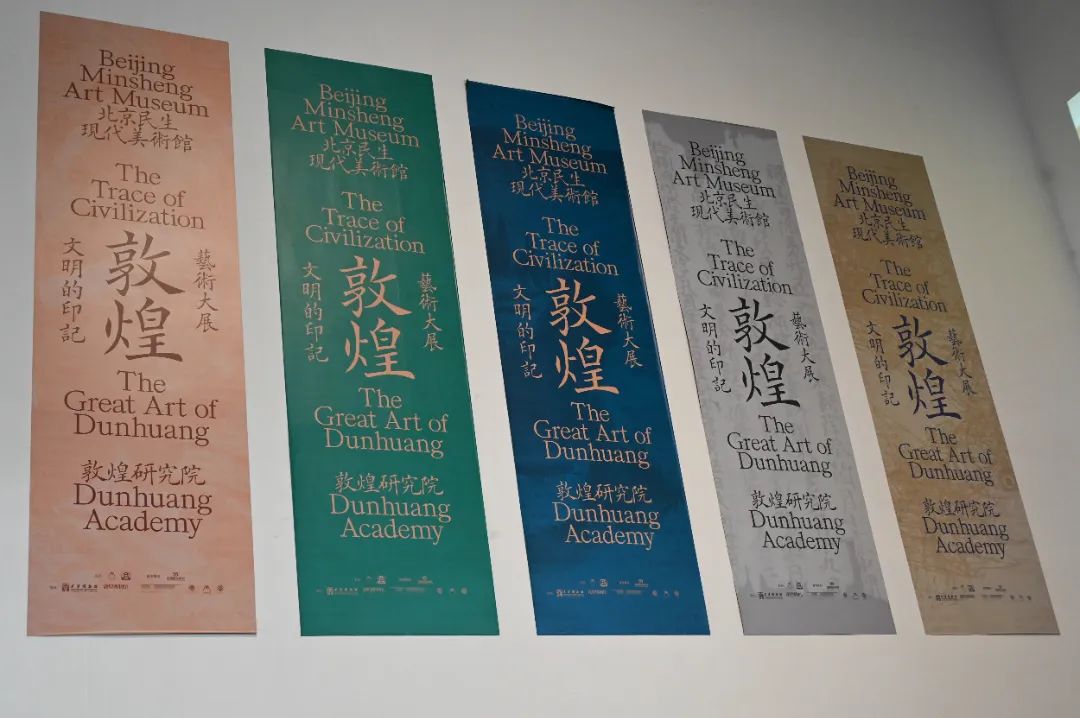
Professor Dong Qiang also briefed our Scholars on the history of Dunhuang, its art, and Dunhuangology. Dunhuang has been a hub of cross-cultural communication throughout the ages; its art and culture were first made known to the West in the 20th century. Chang Shuhong met and fell in love with the Dunhuang art while studying in France. He felt enchanted by “the true art of the East” shining in the Dunhuang art and was determined to return to China for Dunhuang studies. Despite all his hardships, Chang devoted his lifetime to the Dunhuang art and culture. His daughter, Shana, followed his footsteps; since childhood, she accompanied her father on his tours to Dunhuang, copying the murals. An eminent artist herself, Chang Shana has made lifelong efforts to protect the Dunhuang art and culture.
Professor Dong Qiang hoped that Yenching Scholars could, by accumulating every “small step” in this and similar exhibitions, see how traditional Chinese culture, the Dunhuang culture included, has anchored itself in cross-cultural exchanges between the East and the West. More so, he hoped that events like this could help the Scholars position themselves in their studies and future careers. Professor Dong believed that exhibition tours and field projects would help our Scholars forge broader perspectives on cultures and histories and assist them as outstanding experts on China.
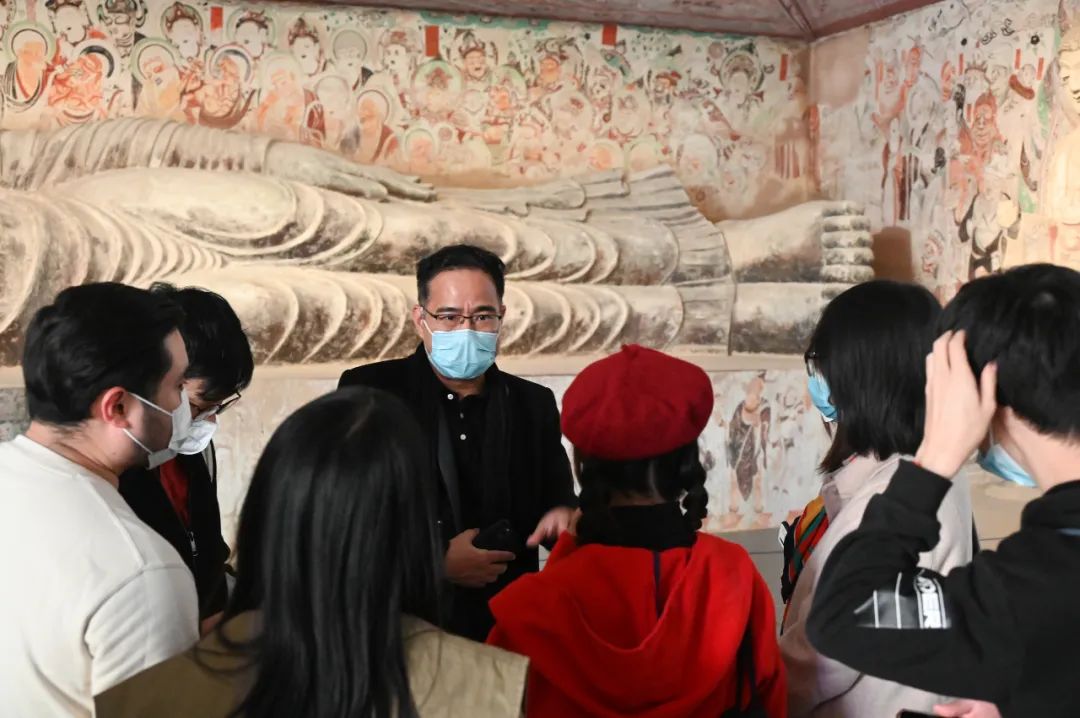
Li Feng, Director of the Minsheng Art Museum and co-curator of the exhibition, received the Scholars and teachers. Mr. Li noted that the exhibition team worked hard to present the art of Dunhuang through an exhibition that features historical details but is organized in a modern way. He hoped that our Scholars could admire the splendors of the Dunhuang art and culture and make it known to more people in their social networks. We invited Zhu Jixin, a volunteer guide for the exhibition, and Cui Jiabao, a doctoral candidate from the PKU School of Archaeology and Museology, as our Chinese and English guides.
Scholars embarked on a time travel of the arts, starting from the replica of the Mogao Cave 158 that accommodated the giant stucco statue of Buddha in Nirvana. The magnificent art of Dunhuang was brought to life before us while we were admiring painted sculptures and breathtakingly vivid murals and immersed in the tour guides’ academically detailed descriptions. The tour was an unadulterated experience in the acme of art. Moreover, the Dunhuang art mirrors every vicissitude in the history of Dunhuang; thus, it remains enchanting through time and space.
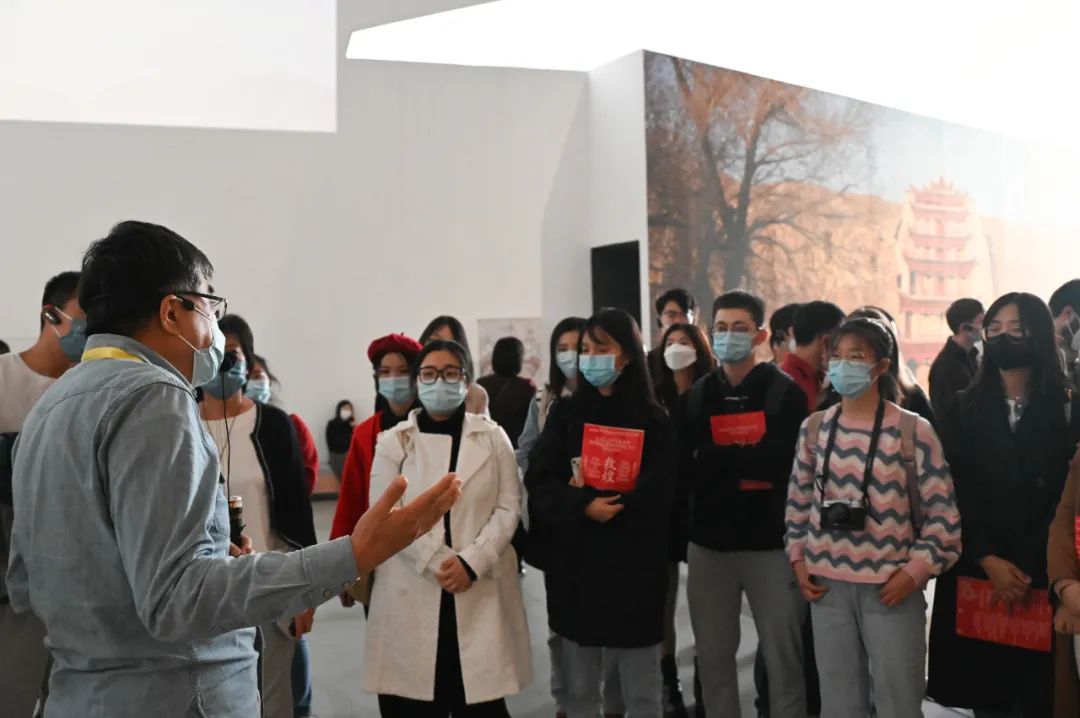
Kang Xiaomeng (China) was impressed with Zhu Jixin’s comments, “I’m excited at hearing Zhu’s witty comments. We saw how Buddhist art, sculpture, and painting evolved in China in the Northern Wei, late Tang, Song, and Yuan periods. I admired this exhibition’s exquisite Buddhist art and other aspects, such as Buddhist stories, lifelike flying Apsaras, and myths and legends.”
Christian McDermott-Pell (UK) was awed at the exhibition, “I’m sort of captivated by the shades of blue, which are frequently seen in the grotto art of Dunhuang, especially in the artworks of the Tang dynasty. It is a charming contrast to Western works. I knew little about Buddhism or the Buddhist art of ancient China; this exhibition was an eye-opener. I learned in the exhibition the history of Buddhism and religious complexity presented in Buddhist art.”
Scholars were fascinated by the stunning beauty of the Dunhuang art, feeling sorry for the lost cultural relics and the consequences on China’s Dunhuangology.
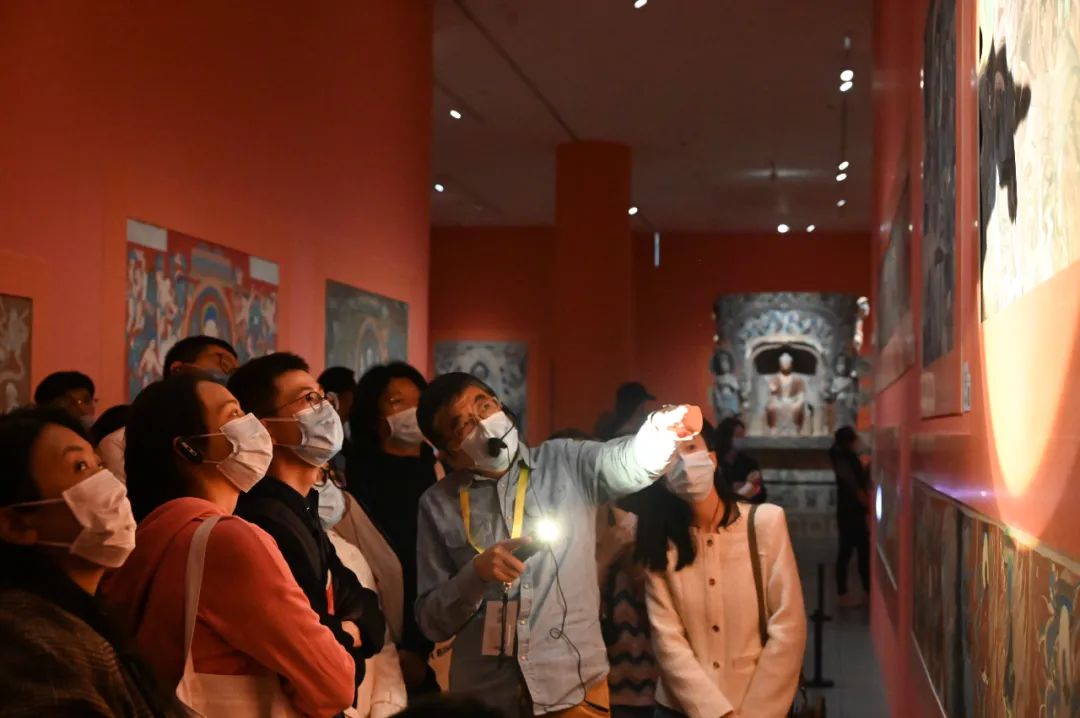
Yu Zhiwen (China) was filled with emotions, “I’m impressed with what the guide said about Dunhuangology at Cave 17. Japan once claimed that Dunhuangology was rooted in Japan, even though Dunhuang is in China. But now we can say, proudly and confidently, the world must look at China for both Dunhuang and Dunhuangology. We, young people, are increasingly proud of the culture of the Chinese nation, and we grow firmer on our responsibilities.”
McDermott-Pell said, “The incomplete grotto murals call concerted efforts from the international community for the return and restoration of historical artworks. Only in this way can we have opportunities to admire and study the gems of art completely.”
Arrian Ebrahimi (USA) was greatly inspired by the art of Dunhuang. “Since coming to China, I’ve been fascinated by the richness of Chinese literature and culture. I once believed that Chinese history had been preserved by written records only. I see now my idea was limited because my China studies, which were quite limited, focused only on Confucian classics. So, I’m grateful to join this tour, where I could admire the Buddhist visual art of ancient China and observe some of the most appealing religious stories. Likewise, I saw in this exhibition that visual art could win a larger audience than written words. I have begun thinking about the role art images have played in the history of the West and the East.”
Grottoes at Dunhuang house world-cherished gems of art, and the Dunhuang culture is China’s invaluable treasure of art. Yenching Scholars were impressed by the great art of Dunhuang, a product of Eastern and Western arts stemming from both religious and secular lives. The visit, short as it was, has lingered on the students’ minds and boosted their passion for understanding Chinese civilization.
